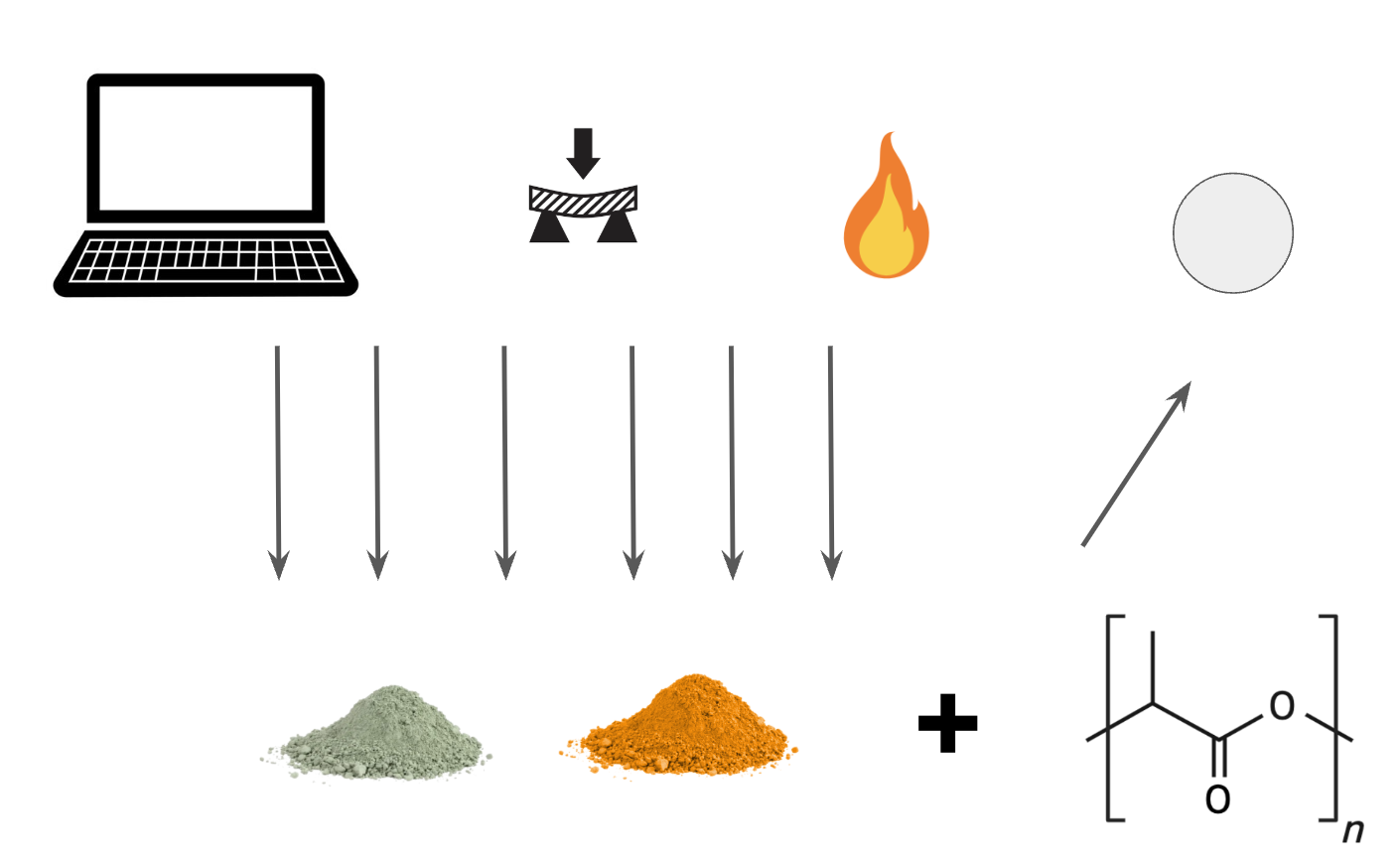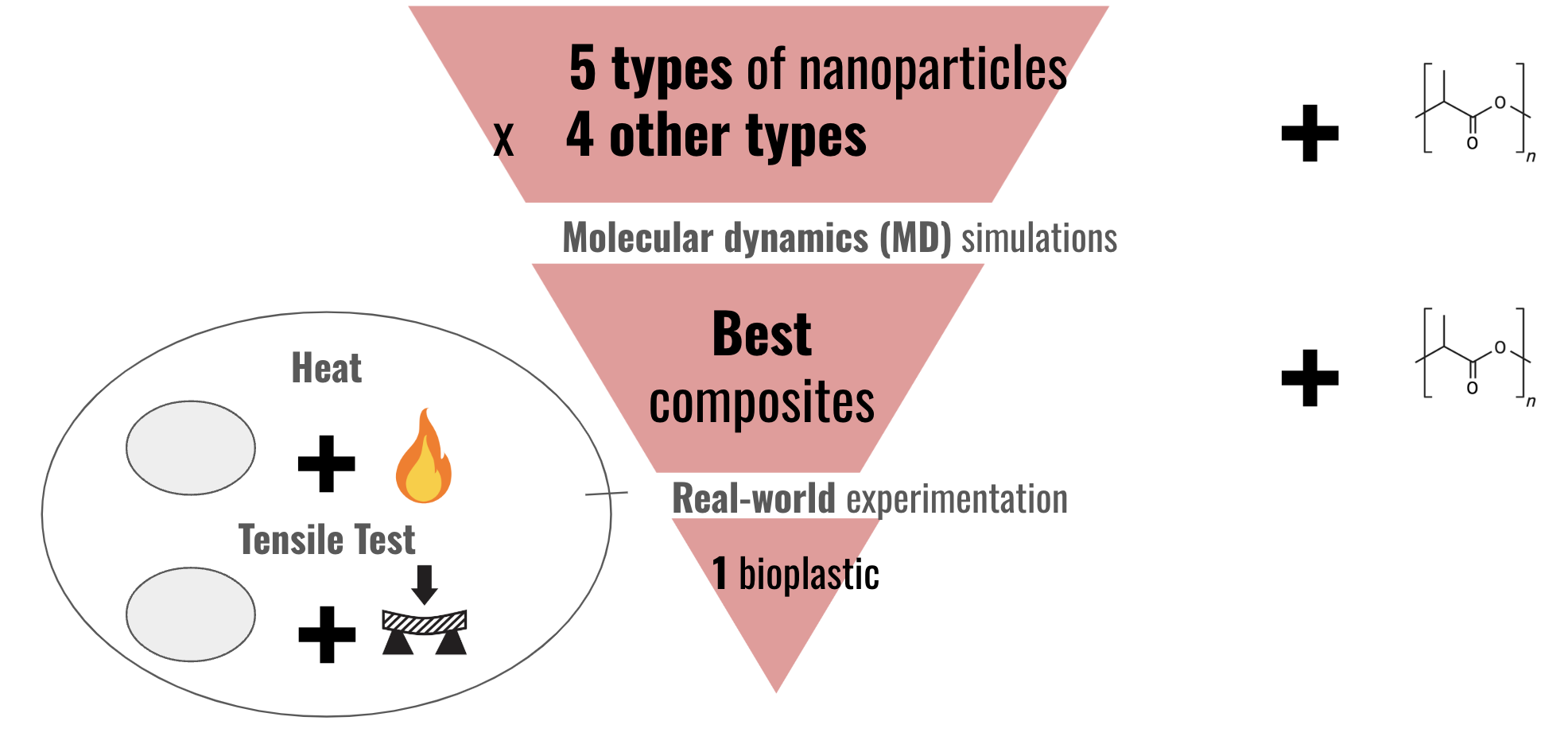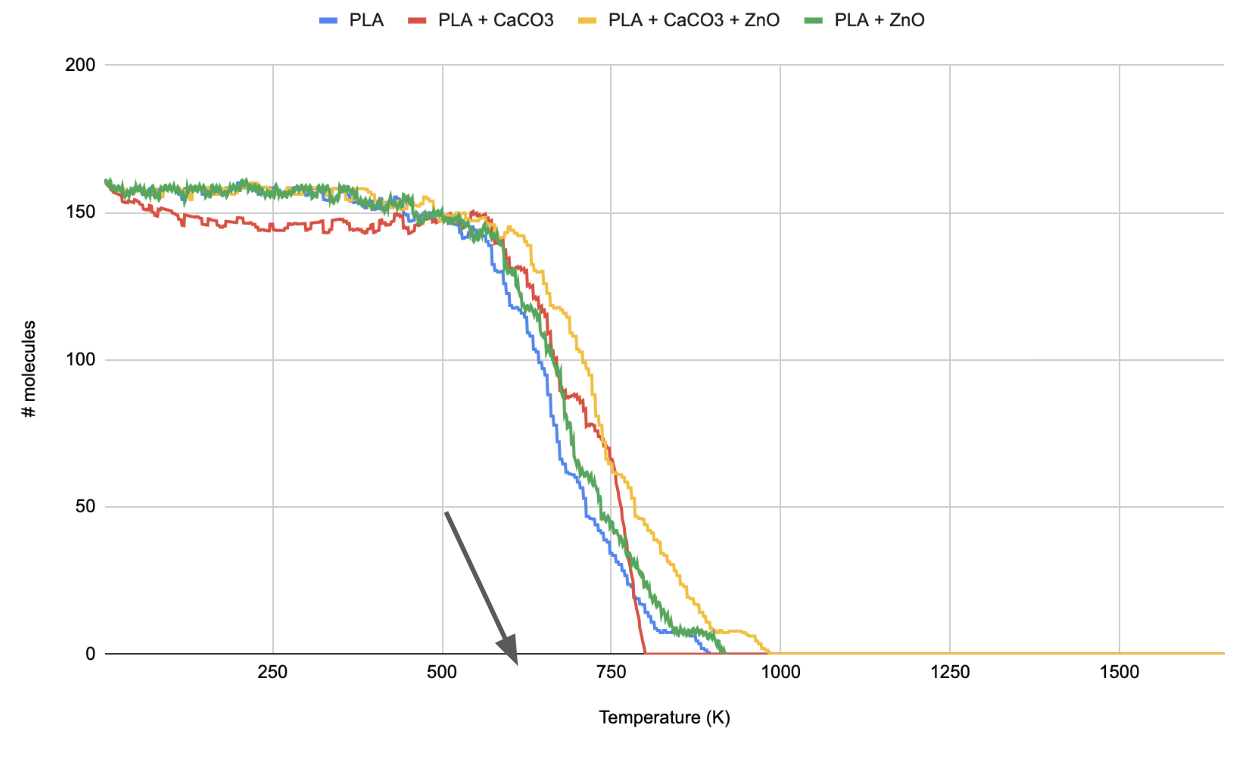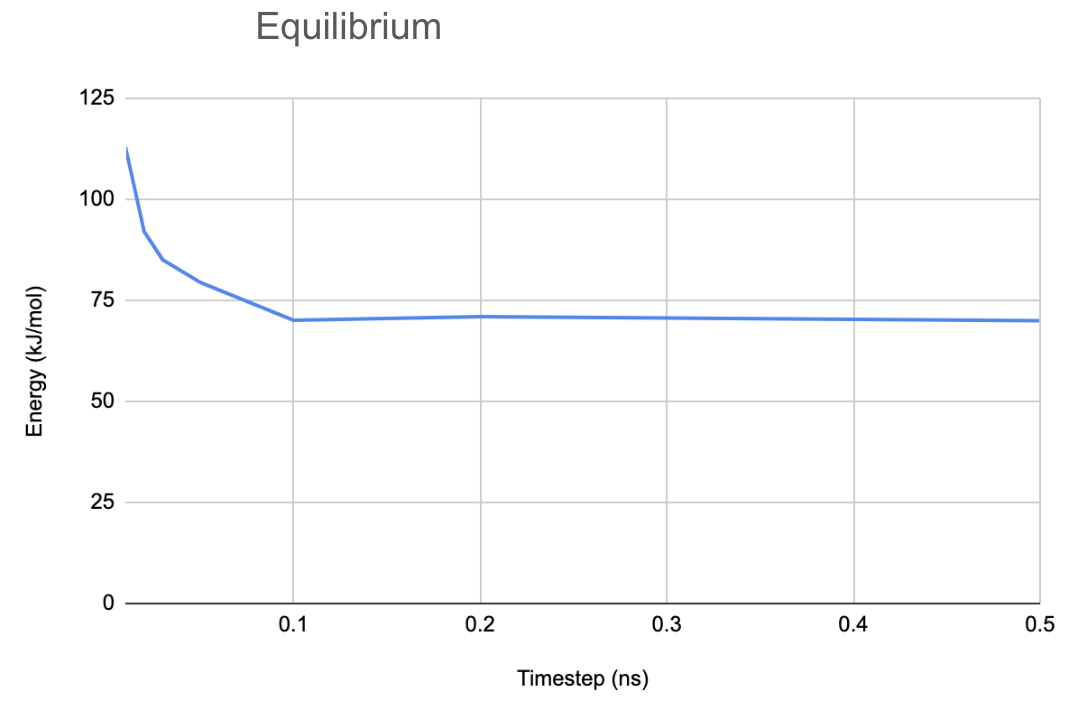This course involves an independent research project where the student investigates a topic of their choice related to STEM. This requires reading scientific literature and practicing technical writing. It culminates in a February science fair where students present in front of expert judges.
Novel PLA Nanocomposite Bioplastic For Use In Packaging
Description
Adding both calcium carbonate and zinc oxide nanoparticles to polylactic acid enhances its mechanical and thermal properties more than either of those nanoparticles could do on their own.
Abstract
The growing demand for plastic packaging, coupled with its environmental consequences,
creates an urgent need for sustainable alternatives to conventional fossil-fuel-based plastics.
Polylactic acid (PLA), a biodegradable bioplastic, is a potential replacement but suffers from
significant limitations, including low thermal stability. Reinforcement with metal-based nanoparticles
may address these deficiencies, though existing research has focused on individual nanoparticle types
instead of combinations of them. This work seeks to advance PLA-based bioplastics by incorporating
multiple nanoparticle types, using their distinctive properties to enhance thermal and mechanical performance.
The study uses molecular dynamics (MD) simulations to first model the behavior of PLA nanocomposites and
identify compositions which maximize stiffness and heat resistance. The best composites will be experimentally
validated by testing mechanical, thermal, and biodegradability properties, to verify real-world applicability.
The research will thus explain the synergistic effects of nanoparticle combinations within PLA. Also, by improving
PLA’s performance, it will help advance sustainable materials for packaging, thus reducing environmental impact
and enabling the broader adoption of bioplastics. The MD simulation have demonstrated that of the tested
composites, a combination of calcium carbonate and zinc oxide had the most improved mechanical and thermal
properties. The research should ultimately produce a novel, high-performance PLA nanocomposite and an MD
simulation model to guide future experiments in polymer nanocomposite design.
Keywords: polylactic acid, nanoparticles, MD simulation, bioplastics, sustainability.
Graphical Abstract

Researchable Question
How do different forms of metal-based nanoparticles work together to affect the thermal and mechanical properties of polylactic acid?
Hypothesis
Combining different types of metal-based nanoparticles enhances the mechanical strength, stiffness, and thermal resilience of PLA beyond that of pure PLA or composites with a single nanoparticle type.

Background
The demand for plastic packaging is sharply on the rise. The traditional plastics from which it is produced offers
low costs, yet high availability,
and offer the durability necessary for everyday use. 42% of the plastic produced is made for disposable packaging, and
is considered a major source of waste globally (Rosenboom et al., 2022). This issue will persist
unless quelled; since conventional, fossil-fuel based plastics will not degrade once disposed of,
and this plastic poses a danger to marine life and potentially to human health. The solution is a
biodegradable alternative that retains the properties of traditional plastics, also known as a bioplastic.
Polylactic acid (PLA) is the biggest bioplastic on the market currently, but its mechanical
and thermal properties are flawed – namely, its low strength and its propensity to degrade rapidly at higher temperatures.
Resarch has shown that reinforcing this bioplastic with nanoparticles can mitigate these issues by improving
mechanical and thermal properties (Lopez et al., 2015). Metal-based nanoparticles have shown promise for plastic packaging use, having excellent mechanical properties as well as improved biodegradability (Cresnal et al., 2021).
We also know molecular dynamics simulations accurately predict properties of polymers (Nikzad et al., 2024). It involves simulating the forces involved between particles on a molecular level, integrating from a set of initial conditions.
Can we leverage this to improve PLA?
Methods
Our approach involves using the molecular dynamics software
LAMMPS to simulate PLA, because it
is free and open source, as well as being widely used for materials science (LAMMPS, 2024). This resulted in simulation that models the mixture of PLA and the nanoparticles, allows them to reach
equilibrium, then measures properties like Young’s modulus. For MD simulations, each particle must
have a “force field” that dictates its interactions with other particles. This is essentially a formula for its
potential energy, which can be used to predict movement of the molecules (Nikzad et al., 2024).
Accurately modelling the PLA-nanoclay composites required determining which force fields are
sensible theoretically as well as producing results that match experimental data.
Based on their predicted mechanical properties from the MD model, we produced PLA, calcium carbonate, and zinc oxide nanocompsites in real life.
Producing a plastic film is simple, yet time-consuming – I used a method called solvent casting. Pure PLA
film was also produced as a control.
The PLA films will undergo a tensile test. This will
allow the determination of Young’s modulus. Thermal degradation can easily be quantified by raising the
temperature of the polymer while measuring its mass throughout. Water permeability will be measured by
placing the plastic film on a cup of water and measuring the change in mass.

Results

The composite with both zinc oxide and calcium carbonate exhibited a greater Young's Modulus than the alternatives.

Degradation occurred slower for the composites with both zinc oxide and calcium carbonate.

The simulation's energy converged to a single value across every simulation.
Analysis
The primary objective of this research is to improve PLA’s mechanical and thermal properties through reinforcement with multiple types of metal-based nanoparticles. The goal of simulating the composite behavior with molecular dynamics was achieved with success. In the molecular dynamics simulations, composites with two types of nanoparticles had a 4% higher Young’s Modulus on average compared to their two counterparts with a single type of nanoparticle added. The thermal stability improved by X% on average as well. In the simulations, nearly every composite had a statistically significant difference in Young’s modulus compared to neat PLA. This was determined by a two-sample t-test where each group had five samples. The best performing composite, PLA with calcium carbonate and zinc oxide nanoparticles, had a Young’s modulus that was statistically significantly more than PLA and calcium carbonate as well as PLA and zinc oxide composites, providing evidence for the hypothesis that multiple types of nanoparticles can work synergistically to improve the properties of PLA.
Discussion
Several limitations and confounding variables could impact the study.
The MD simulations were run with low computational power, meaning that a high timestep
may have negatively affected the accuracy of the result. MD simulations also have
the issue that they are limited to a finite bounded box, while real plastic films
are more like a plane. The resolution of this is to incorporate periodic boundary
conditions into the simulation to model the whole polymer with a small slice (Nikzad et al., 2024).
A large challenge with creation of real-world polymer composites is the issue of dispersion of
nanoparticles (Gbadeyan et al., 2022). This was partially resolved with a magnetic stirrer, but
it is unknown whether this is adequate. An X-Ray Diffraction analysis can resolve this in the
future (Uddin et al., 2023). Lastly, environmental and processing conditions – factors like
humidity, processing temperatures, and lack of consistency synthesis methods can introduce
variability when measuring the mechanical and thermal properties of PLA. The researchers
did their best to control for these factors.
Existing studies have primarily focused on single-nanoparticle PLA composites, whereas this research investigates
combinations of nanoparticles to leverage their synergistic effects. Lastly, we hope to innovate on the
current methods of MD simulations for polymer nanocomposites. The demand for sustainable alternatives to
petroleum-based plastics is partly due to increasing environmental concerns, including the impact of plastic
waste on ecosystems and human health (Gbadeyan et al., 2022). Conventional plastics that are used for packaging,
like polyethylene, contribute significantly to environmental pollution, with limited biodegradability. On the
other hand, biodegradable plastics like PLA can be a promising alternative but lack the mechanical strength and
thermal stability necessary for widespread adoption. This project is significant because it aims to overcome
these limitations by improving the properties of PLA by adding multiple types of clay nanoparticles. The
ability to improve the mechanical and thermal properties of PLA while maintaining its biodegradability
will thus reduce the environmental impact of plastic waste.
References
Cresnal, K. P., Aulova, A., Bikiaris, D. N., Lambropoulou, D., Kuzmič, K., & Fras Zemljič, L. (2021). Incorporation of Metal-Based Nanoadditives into the PLA Matrix: Effect of Surface Properties on Antibacterial Activity and Mechanical Performance of PLA Nanoadditive Films. Molecules (Basel, Switzerland), 26(14), 4161. https://doi.org/10.3390/molecules26144161
Gbadeyan, O.J., Linganiso, L.Z. & Deenadayalu, N. (2022, June 18). Thermomechanical characterization of bioplastic films produced using a combination of polylactic acid and bionano calcium carbonate. Sci Rep, 12(15538). https://doi.org/10.1038/s41598-022-20004-1
LAMMPS. (2024, August 24). LAMMPS Molecular Dynamics Simulator. LAMMPS. https://lammps.org
López, O. V., Castillo, L. A., García, M. A., Villar, M. A. & Barbosa, S. E. (2015). Food packaging bags based on thermoplastic corn starch reinforced with talc nanoparticles. Food Hydrocolloids 43, 18–24. http://dx.doi.org/10.1016/j.foodhyd.2014.04.021
Nikzad, M.K., Aghadavoudi, F. & Ashenai Ghasemi, F. (2024). Thermo-mechanical properties of silica-reinforced PLA nanocomposites using molecular dynamics: The effect of nanofiller radius. J Polym Res, 31(44). https://doi.org/10.1007/s10965-024-03873-0
Rosenboom, JG., Langer, R. & Traverso, G. (2022). Bioplastics for a circular economy. Nat Rev Mater, 7, 117-137. https://doi.org/10.1038/s41578-021-00407-8
Uddin, N., Hossain, T., Mahmud, N., Alam, S., Jobaer, M., Mahedi, S. I., Ali, A. (2024, July 4). Research and applications of nanoclays: A review. SPE Polymers, 5(4), 507-535. https://doi.org/10.1002/pls2.10146
